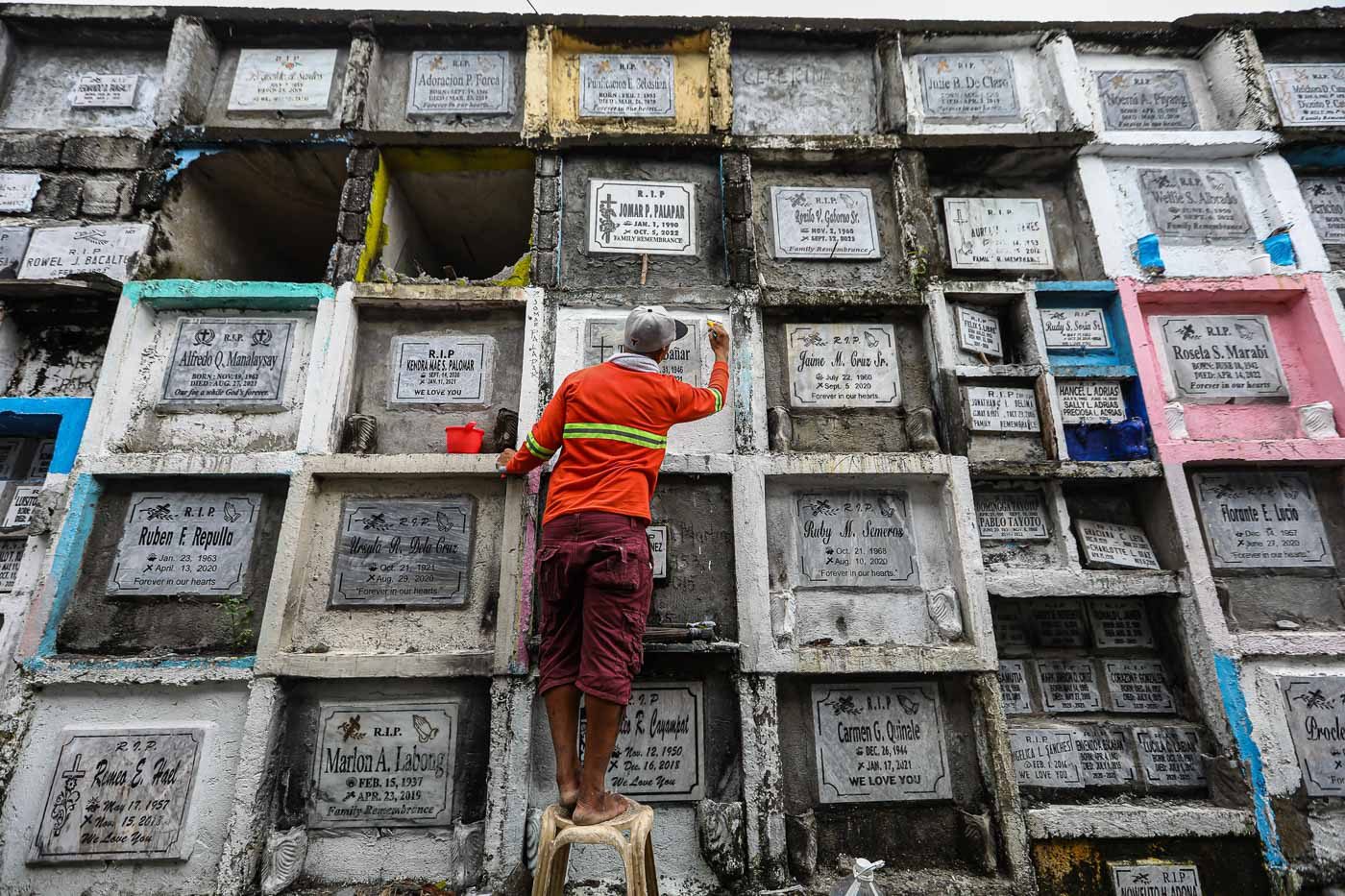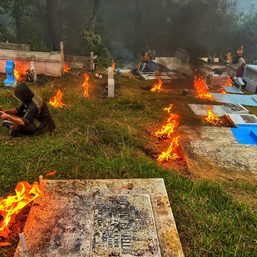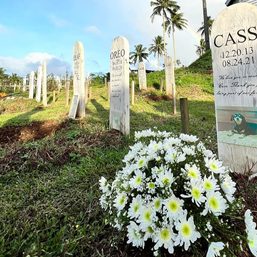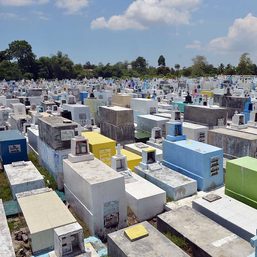SUMMARY
This is AI generated summarization, which may have errors. For context, always refer to the full article.

MANILA, Philippines – Inflation is affecting all aspects of human life, even one’s last breath.
The rising costs of funeral services have made it difficult for families to grieve due to financial strain, even leading to a growing concern about the accessibility and affordability of essential end-of-life services.
According to Villar-owned, publicly-listed, death care and real estate company Golden MV Holdings, the cheapest funeral expenses range from P8,000 to P15,000. Mid-range funeral services may cost up to P250,000, while the most expensive funeral packages may start at around P300,000 to P500,000.
Burial services
Meanwhile, comparing Rappler’s quotation of St. Peter Life Plan Inc.’s life plans made in 2019 to the company’s current offerings in 2023 showed a noticeable uptick. Prices of its most basic plan have gone up from P37,00 to P53,000 or by 43%. The most expensive traditional burial product of St. Peter now costs P157,500 from 2019’s P105,000, representing a 50% increase. St. Peter, however, remains to be among the most affordable.
Publicly-available data from various death care service companies showed that Arlington Memorial had the most varied prices for the high-end market, ranging from P239,200 to P2.4 million.
Then there are companies like Cosmopolitan Climbs Life Plan, which caters both to the mid and high-end markets, with prices ranging from P30,000 to P1 million.
The amounts mentioned above already cover the costs of the casket, embalming and cosmetics, fees for the funeral staff, documentary requirements, and public viewing.
Burial lot
The burial lot is another expense.
A data scrub from online buy-and-sell platform Carousell showed that memorial lots cost between P50,000 to almost P1 million, depending on the location and how many deceased people can be buried in the lot. The usual prices range between P60,000 to P150,000.
Rappler found that memorial lots are more expensive in Metro Manila than areas outside the capital.
Moreover, listings for mausoleums go as high as P60 million for a 66-square-meter lot.
Cremation
Due to the rising cost of burial lots, cremation has seen a steady rise in popularity.
Data from Rappler’s research found that prices can range from P45,000 to P400,000. This usually includes the the cremation itself, the urn, and other funeral services.
Cremation is becoming the preference of more people due to the affordability of a columbary vault, which ranges between P30,000 to P300,000.
Ossuary vaults, which contain the bones of the deceased, start at around P130,000 to P200,000, according to data from Golden Haven.
Flowers, catering
Based on data from popular flower shops in Metro Manila, the cheapest funeral wreath costs P2,900, but prices can go as high as P20,000, depending on the flowers used.
The price of a casket flower arrangement ranges from P1,000 to P7,500, while a one-layer stand arrangement ranges between P1,900 to P6,800.
Prices of typical food items served in funerals have gone up for the most part of 2023, although a slowdown has been observed during the third quarter.
As of September 2023, prices of coffee and bread went up 5% and 8.3%, respectively. Meanwhile, prices of common wake fare like nuts (9.5%), noodles (7.2%), ready-made food (6.8%), and tea (5.5%) have also increased year-on-year.
Planning ahead
To deal with rising funeral costs, it is ideal to have a memorial plan. This locks in the costs of funerals and other expenses at current prices.
A pre-need plan also allows individuals to choose ceremony details, preferred caskets, and other funeral-related services of choice.
Rappler found that most pre-need plans can be paid up to five years and have flexible payment terms. Some even offer discounts of up to 15%. These plans are also assignable and transferable.
At-need plans, or those that are availed of by family members when a death occurs, are made under time restrictions on top of heightened emotions.
From documents of various companies offering these plans, payment terms for at-need plans are usually tight and need to be paid within a week.
Subsidies for the poor
For the poor, the Department of Social Welfare and Development offers death and burial assistance to ease the financial burden.
The agency offers a one-time cash aid grant of P10,000 for indigent families. The amount can be used for buying the casket, funeral services, burial plot, or transportation, among others.
Applicants just need to provide a death certificate and a funeral contract that outlines the arrangements made for the funeral. A statement of account which itemizes the costs associated with the funeral arrangements is also required. In addition, a barangay certificate is also needed.
The poor may opt to bury the deceased relative in an “apartment tomb” in a public cemetery, and must sign a P5,000 five-year lease contract. They should be able to renew the contract after, or transfer the remains to a private cemetery or memorial park before the lease expires.
A bill filed by Senator Raffy Tulfo seeks to institutionalize this program. Should Senate Bill 1695 become law, families whose combined gross income does not exceed P15,000 per month, do not own real property or a vehicle, will be automatically be eligible for the cash grant. –Rappler.com
Add a comment
How does this make you feel?
![[WATCH] In the Public Square with John Nery: Who’s afraid of death anyway?](https://www.rappler.com/tachyon/2023/11/In-the-Public-Square-LS-SQ-3.jpg?resize=257%2C257&crop=381px%2C0px%2C1080px%2C1080px)




There are no comments yet. Add your comment to start the conversation.